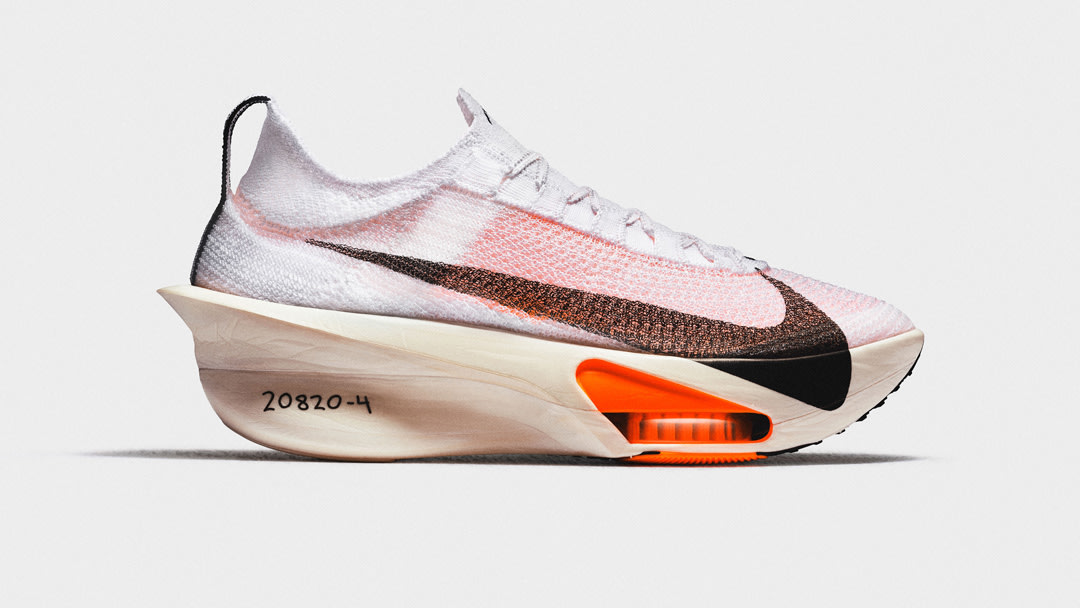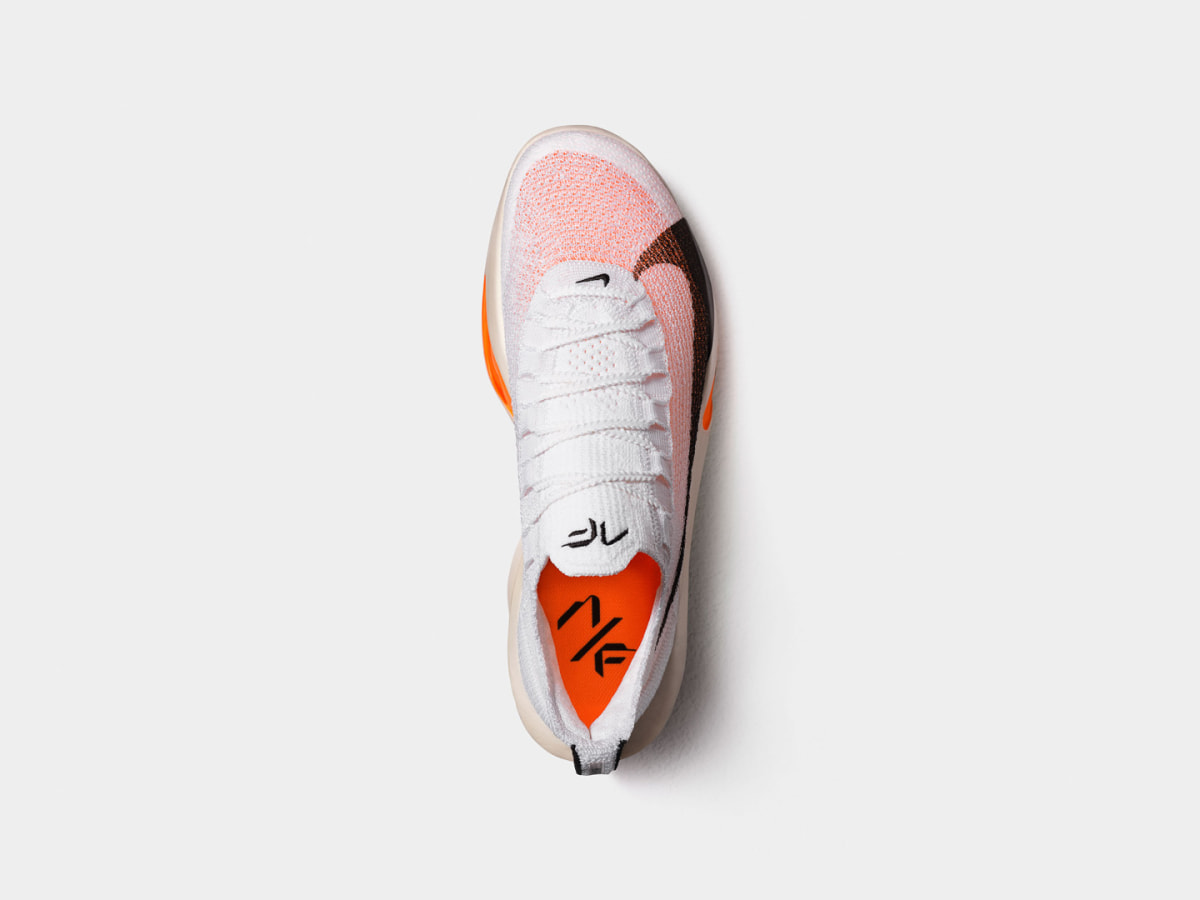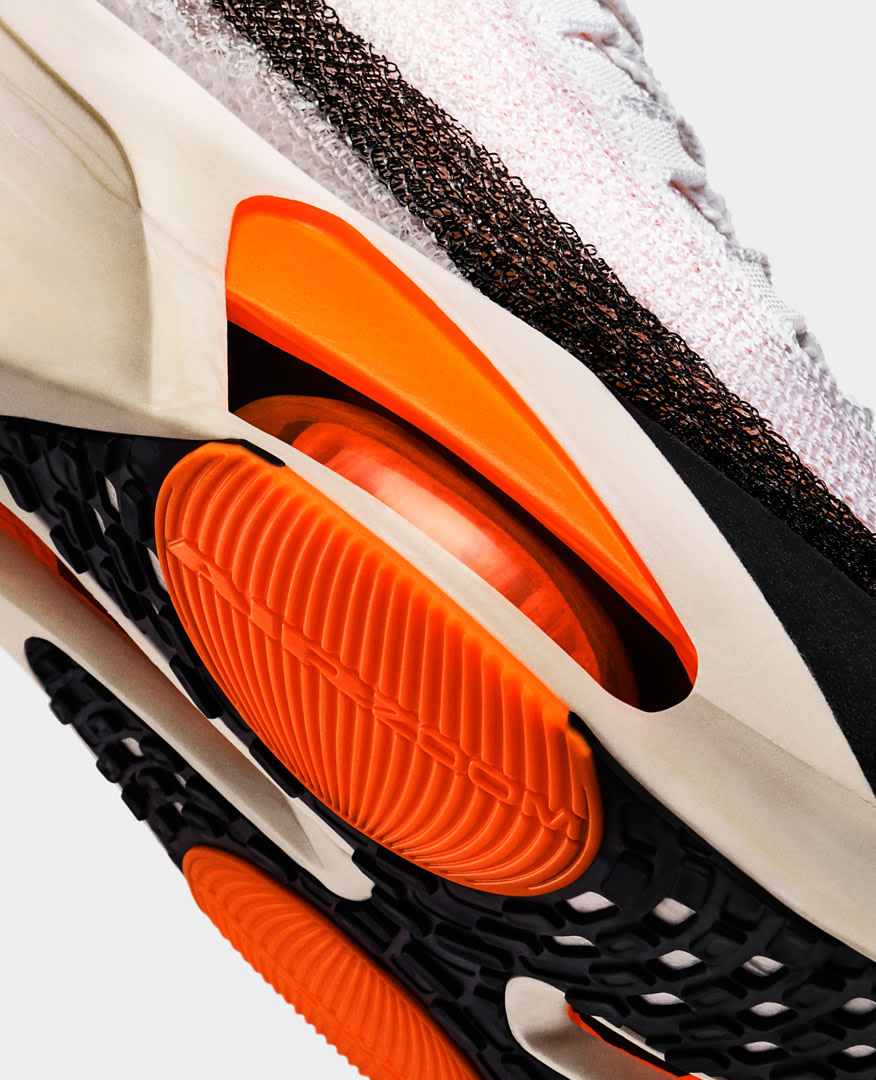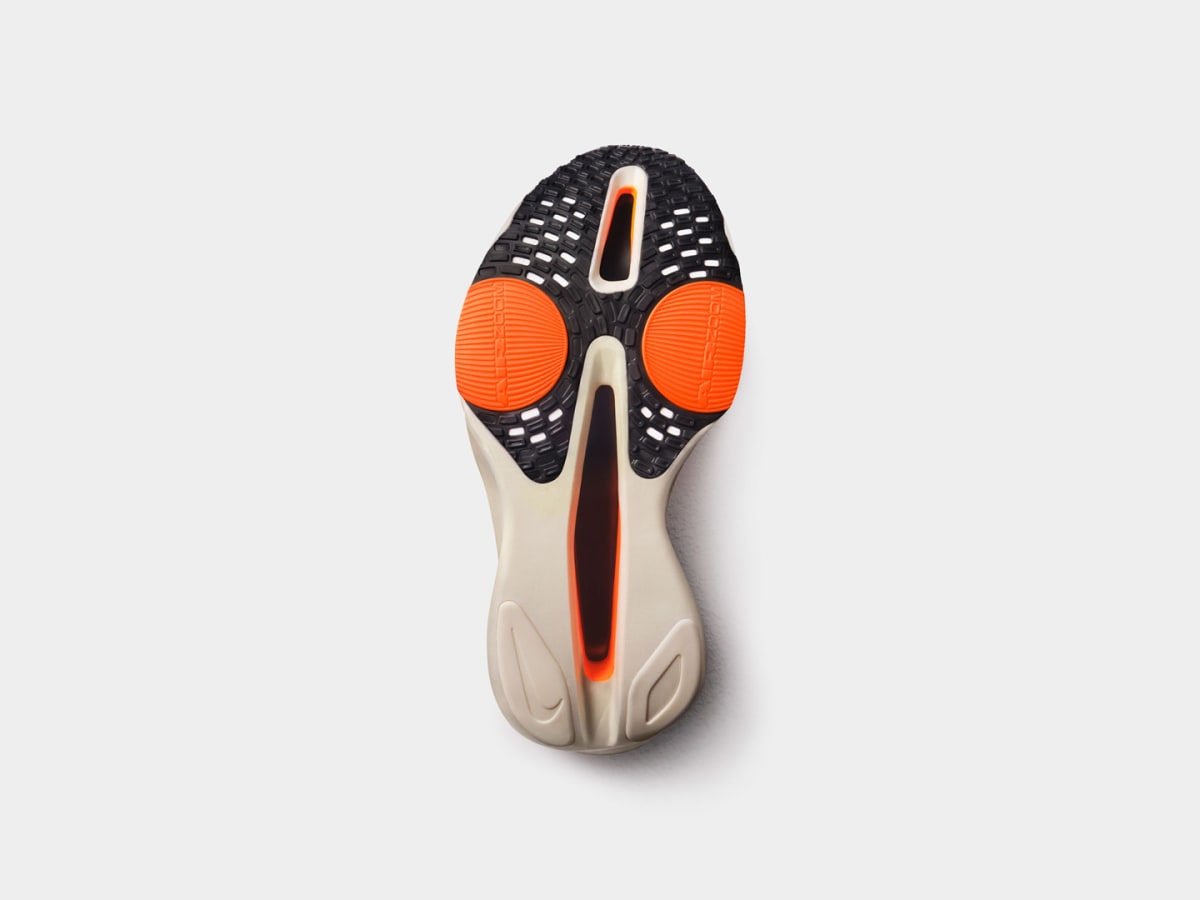- | 8:00 am
Inside the design of Alphafly 3, Nike’s record-smashing marathon shoe
The Alphafly 3’s unique form is helping runners go farther, faster.

Over the past few months, marathoners Kelvin Kiptum, Eliud Kipchoge, and Sifan Hassan have all won major marathons around the world. One broke a world record, and another came within seconds of breaking another. All three runners had one thing in common: They were wearing early versions of Nike’s new Alphafly 3 shoes.
It’s the latest generation of a quirky shoe designed specifically to be used by marathon runners. With a platform-esque foam sole that fans out around the heel, the Alphafly 3 is a double-take kind of shoe, one that might seem more appropriate on the set of a mid-grade sci-fi film than on the global stage of an elite sport. But every part of the shoe’s unconventional look—from its height to its contours to its material mix and knitting—has been crafted with the simple goal of helping runners run faster marathons.

Weighing just under half a pound, each shoe is a sculpted sandwich of advanced materials and unique forms. The sole measures just less than 40 millimeters, and is comprised of two layers of Nike’s proprietary ZoomX foam, with a thin plate of curved carbon fiber stuck in between. Two bubble-like Air Zoom airbag cushions sit at the ball of the foot to provide extra comfort and energy return, and two valleys of negative space run down the center of the sole to remove unnecessary material and bring down the shoe’s overall weight. The shoe’s uppers are a mix of 3D knit yarns that range from padding to a near-translucent shell. The shoes clock in 15% lighter than the Alphafly 2s.

After high-profile field testing by some of the world’s best marathon runners, this updated version of the Alphafly is going on sale to the distance-running masses on January 4. Those runners probably already know the shoe by sight. Its initial predecessor, the Vaporfly 4%, was publicly released in 2017 after prototype versions were used surreptitiously, and to triple-medal-winning performance, by male marathoners at the 2016 Summer Olympics. The extra tall sole was a notable change from the typical low-profile racing “flats” that had long been used by competitive runners.
“Vaporfly was way higher than anybody had ever seen,” says Bret Schoolmeester, a senior product director overseeing Nike’s running shoes.

The 4% in the Vaporfly’s name alludes to Nike’s lab-backed claim that its shoes reduce the amount of oxygen a runner needs to run at a given pace by 4% compared to conventional racing flats. This measured improvement, and the gold-silver-bronze Olympic trifecta in 2016, had many runners looking past the weirdness of the form factor. Sport regulators, on the other hand, worried the shoes might be too fast.
A new version of the shoe, Alphafly NEXT%, was released in 2018, with an even more unconventional design. In the middle of the foot, the sole of the shoe was broken into two separate pieces, like the paw pads of some not-yet-evolved animal. In October 2019, this was the pair of shoes worn by Kipchoge when he ran a 1 hour 59 minute 40 second marathon during a time trial in Vienna, becoming the first person to run that distance in less than two hours.
These impressive results raised some concerns. World Athletics, the body overseeing track and field competitions, issued new rules in 2020 prohibiting the use of shoes with sole taller than 40 millimeters. “It’s given us a real clear box to play in,” Schoolmeester says.
A second split-sole version of the Alphafly was released in 2022, and that September, Kipchoge used it to set a world record marathon time during an official race in Berlin, running 26.2 miles in 2 hours 1 minute and 39 seconds.

The Alphafly 3 was designed to bring running times down even more, and early versions have delivered. Wearing a prototype version of the Alphafly 3, Kiptum set a new world record marathon time this October in Chicago, running the race in 2 hours and 35 seconds. That same day, Hassan ran the second-fastest women’s marathon of all time, at 2 hours 13 minutes and 44m seconds, in proto-Alphafly 3s.
This new version replaces the split-sole look of its predecessors for a continuous bottom, with a wider carbon inside that improves comfort during the footstrike on the ground and the push off of each stride. These changes were heavily informed by lab testing and feedback from Nike athletes.

“They wanted a much smoother transition in the shoe. They wanted it to feel more stable. Even super-human athletes like Kelvin Kiptum, Sifan Hassan, and Eliud Kipchoge, after 20 miles, their mechanics start to falter a little bit and they need more support,” Schoolmeester says. “For us normal humans, we need it even earlier and need it even more.”
Some changes to the design were informed by digital motion capture of athletes using the shoes, including the curves added to the carbon fiber plate, which were refined to provide as much energy transfer out of each stride. “With a straight flat plate you just moved work from one part of the foot up into a different part of the leg,” Schoolmeester says. “This curve really allowed us to reduce the work and not move it elsewhere.”
Athlete feedback also informed the knit of the shoe’s upper. It was refined to add more thickness around literal pain points inside the arch and along the side of the big toe, while reducing it down to a thin mesh around the sides and top of the foot. During design, the upper side of the shoe went through 62 variations before landing on the final version.

Based on a few days wearing a sample pair of Alphafly 3s that Nike provided for review, the shoe has a mix of in-your-face design features and elements that almost fade from detection. The overall springiness is the main characteristic, with a bounce added to every stride of a jog. With the heel-to-toe footstrike and slower pace of a casual stroll, the shoes are more wobbly than the typical sneaker. But they are essentially designed to spend as little time on the ground as possible, providing the means to transfer each step’s energy into propulsion through its finely tuned foam cushioning, carbon fiber plate, and airbags.
“Complexity is hard but it also means there’s a lot of meat on the bone in terms of what if we change the plate geometry, what if we change the PSI in the airbag, what if we change the amount of foam above and below each of those components,” says Schoolmeester. “It’s provided this really great variable grid for our team to just go and obsess and obsess and obsess about how they all work together.”
Though the design has already helped runners set new records, its innovation is less about boosting a runner’s speed or enhancing their step than reducing the utter fatigue a multi-hour run can have on the body. Faster runs are essentially a side effect of a shoe that helps the body keep going.
For those who will never, ever, measure their running time in hours, the Alphafly may seem a piece of irrelevant pro gear. But Schoolmeester says Nike has learned lessons from designing these marathon-specific shoes that are already being applied to other lines across the brand.
“By having a very sharp target and what seems like a very niche proposition, we’ve actually been able to serve millions of athletes,” he says.
The design isn’t stopping there. Schoolmeester says athletes are always going to want a lighter shoe that simultaneously offers better energy return, calling it a never-ending pursuit. Nike’s designers plan to keep iterating and improving, and new versions of the Alphafly may be hitting marathon courses before long. “There’s stuff in progress right now to keep on answering those athletes’ needs,” Schoolmeester says.







































